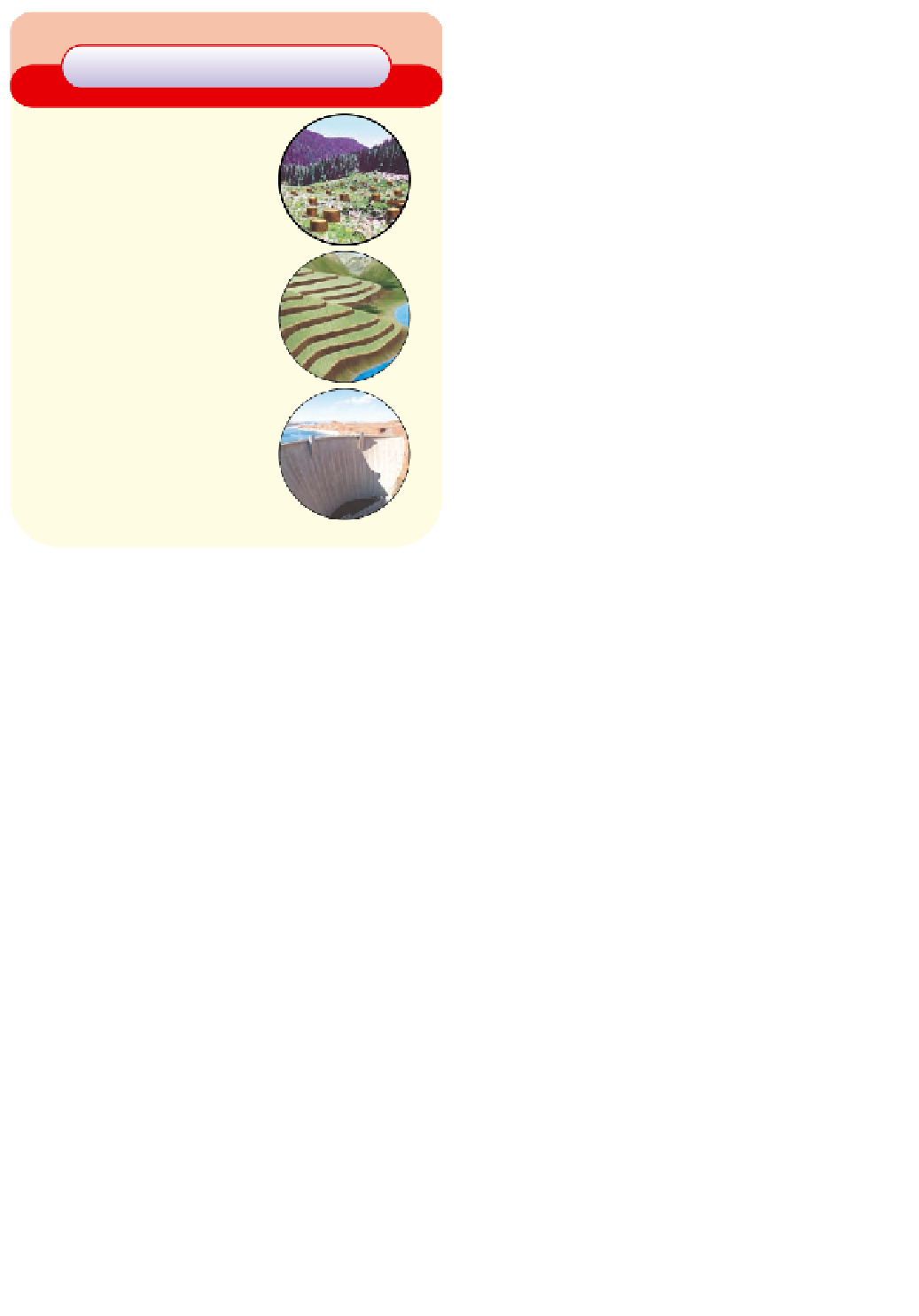Environmental Engineering Reference
In-Depth Information
major types:
saltwater
or
marine
(particularly estuaries,
coastlines, coral reefs, coastal marshes, mangrove
swamps, and oceans) and
freshwater
(particularly
lakes and ponds, streams and rivers, and inland
wetlands). Figure 5-23 (p. 96) shows the distribution
of the world's major oceans, lakes, rivers, coral reefs,
and mangroves.
Natural Capital Degradation
Mountains
Landless poor migrating uphill to
survive by growing crops
Timber extraction
What Kinds of Organisms Live in Aquatic
Life Zones?
Aquatic systems contain floating, drifting, swimming,
bottom-dwelling, and decomposer organisms.
Saltwater and freshwater life zones contain several
major types of organisms. One group consists of
weakly swimming, free-floating plankton. They con-
sist mostly of
phytoplankton
(plant plankton) and
zoo-
plankton
(animal plankton).
A second group of organisms consists of
nekton,
strongly swimming consumers such as fish, turtles,
and whales. A third group,
benthos,
dwells on the bot-
tom. Examples include barnacles and oysters that an-
chor themselves to one spot, worms that burrow into
the sand or mud, and lobsters and crabs that walk
about on the seafloor. A fourth group consists of
de-
composers
(mostly bacteria) that break down the or-
ganic compounds in the dead bodies and wastes of
aquatic organisms into simple nutrient compounds for
use by producers.
Mineral resource extraction
Hydroelectric dams and
reservoirs
Increasing tourism (such as
hiking and skiing)
Air pollution from industrial and
urban centers
Increased ultraviolet radiation
from ozone depletion
Soil damage from off-road
vehicles
Figure 5-22
Natural capital degradation:
major human im-
pacts on the world's mountains.
Critical thinking: what are the
direct and indirect effects of your lifestyle on mountains?
Finally, mountains play a critical role in the hydro-
logic cycle by gradually releasing melting ice, snow,
and water stored in the soils and vegetation of moun-
tainsides to small streams.
Despite their ecological, economic, and cultural
importance, the fate of mountain ecosystems has not
been a high priority of governments or many environ-
mental organizations. Mountain ecosystems are com-
ing under increasing pressure from several human ac-
tivities (Figure 5-22).
Factors That Limit Life at Different Depths
in Aquatic Life Zones
Life in aquatic systems is found in surface, middle,
and bottom layers.
Most aquatic life zones can be divided into three lay-
ers:
surface, middle,
and
bottom.
Important environmen-
tal factors determining the types and numbers of
organisms found in these layers are
temperature, access
to sunlight for photosynthesis, dissolved oxygen content,
and
availability of nutrients
such as carbon (as dissolved
CO
2
gas), nitrogen (as NO
3
), and phosphorus (mostly
as PO
4
3
) for producers.
In deep aquatic systems, photosynthesis is largely
confined to the upper layer, or euphotic zone, through
which sunlight can penetrate. The depth of the euphotic
zone in oceans and deep lakes can be reduced when ex-
cessive algal growth (algal blooms) clouds the water.
In shallow waters in streams, ponds, and oceans,
ample supplies of nutrients for primary producers are
usually available. By contrast, nitrates, phosphates,
iron, and other nutrients are often in short supply in
the open ocean and limit net primary productivity
(NPP; see Figure 3-20, p. 50). NPP is much higher in
some parts of the open ocean, where upward flows of
5-5 AQUATIC ENVIRONMENTS: TYPES
AND CHARACTERISTICS
Types of Aquatic Life Zones
Saltwater and freshwater aquatic life zones cover
almost three-fourths of the earth's surface.
The aquatic equivalents of biomes are called
aquatic
life zones.
The major types of organisms found in
aquatic environments are determined by the water's
salinity
—the amounts of various salts such as sodium
chloride (NaCl) dissolved in a given volume of water.
As a result, aquatic life zones are classified into two


